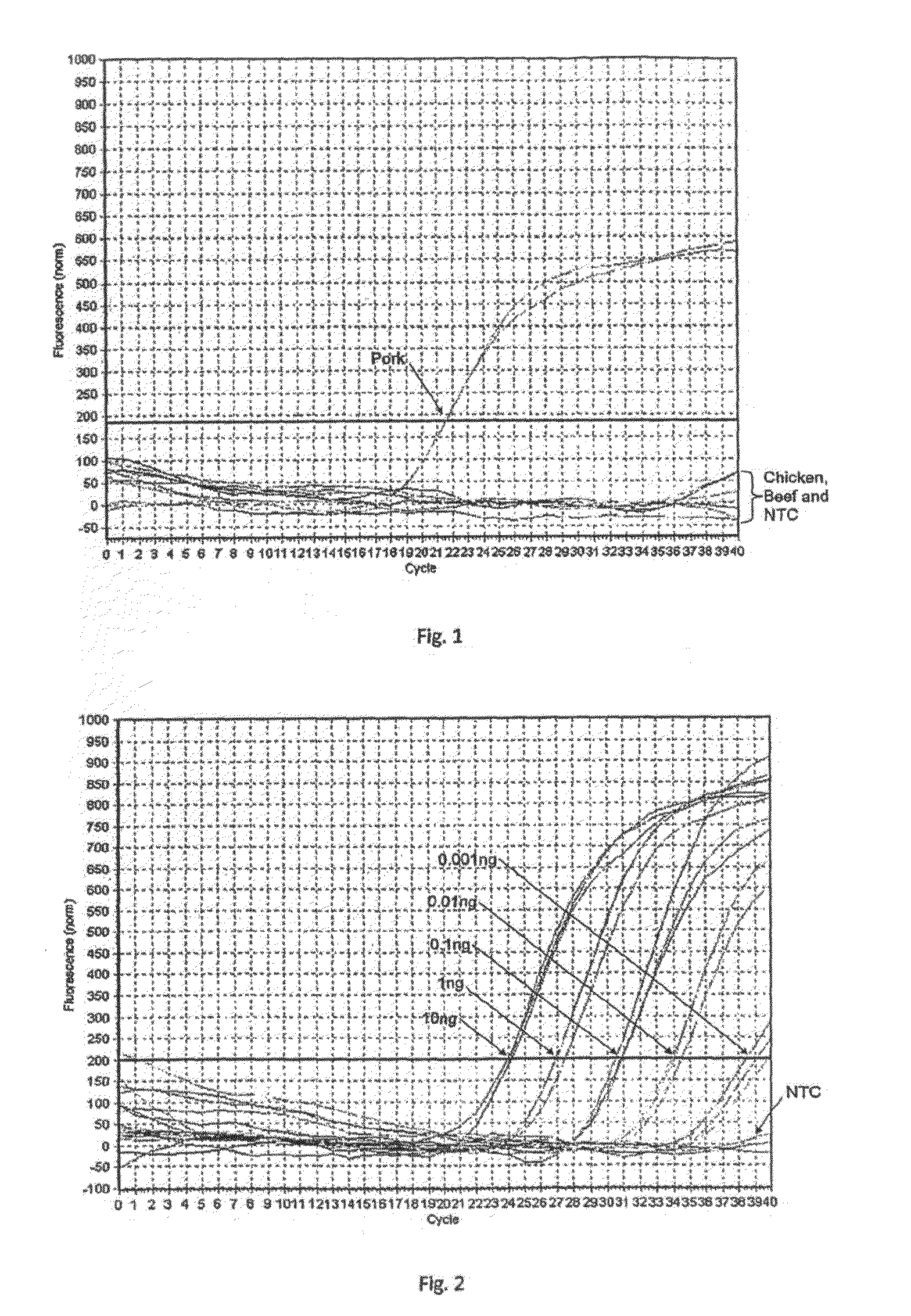Method for identifying a pork content in a food
a technology food, which is applied in the field of methods for identifying the content of pork in food, can solve the problems of food adulteration, food products that contain pork, and the identification of animal species especially pork is becoming an important issue for consumers
- Summary
- Abstract
- Description
- Claims
- Application Information
AI Technical Summary
Problems solved by technology
Method used
Image
Examples
Embodiment Construction
[0010]The invention describes the development and application of pork-specific real-time PCR assay for Halal authentication. Primers are designed to amplify an 89 by amplicon of the pork ND5 mitochondrial (ND5) gene and were mismatched to commercial species of chicken and beef. The assay is highly sensitive and detected the presence of 0.001 ng of pork template DNA when assessed using dilutions of DNA in water. The primers set developed for Halal product verification are based on ND5 mitochondrial gene of pork and the sequence of the primers is as follows:
Forward primer(SUS-FWD: 5′-AGC TGC ACT ACA AGC AAT CC-3′)Reverse primer(SUS-RVS: 5′-ATG CGT TTG AGT GGG TTA GG-3′)
[0011]PCR conditions on detection of pork DNA is done by amplification in the Mastercycler ep (Eppendorf AG, Hamburg, Germany). Each reaction tube contains 20 μl of reaction mixture which consists of 10 μl 2× Quantitect SYBR Green PCR Master Mix (Qiagen, Hilden, Germany), 1 μl forward primer, 1 μl reverse primer, 3 μl d...
PUM
| Property | Measurement | Unit |
|---|---|---|
| Temperature | aaaaa | aaaaa |
| Length | aaaaa | aaaaa |
| Concentration | aaaaa | aaaaa |
Abstract
Description
Claims
Application Information
 Login to View More
Login to View More - R&D
- Intellectual Property
- Life Sciences
- Materials
- Tech Scout
- Unparalleled Data Quality
- Higher Quality Content
- 60% Fewer Hallucinations
Browse by: Latest US Patents, China's latest patents, Technical Efficacy Thesaurus, Application Domain, Technology Topic, Popular Technical Reports.
© 2025 PatSnap. All rights reserved.Legal|Privacy policy|Modern Slavery Act Transparency Statement|Sitemap|About US| Contact US: help@patsnap.com


